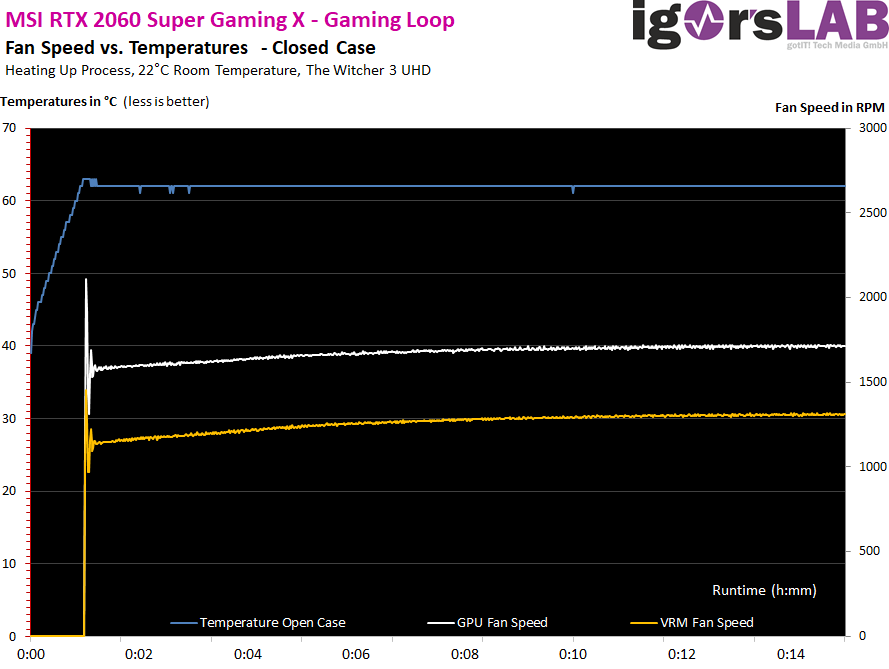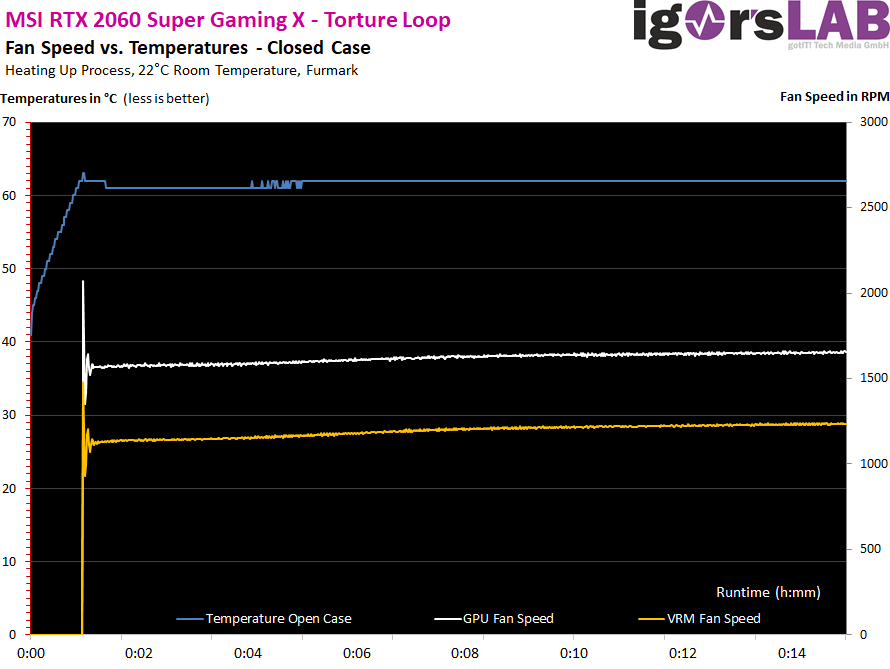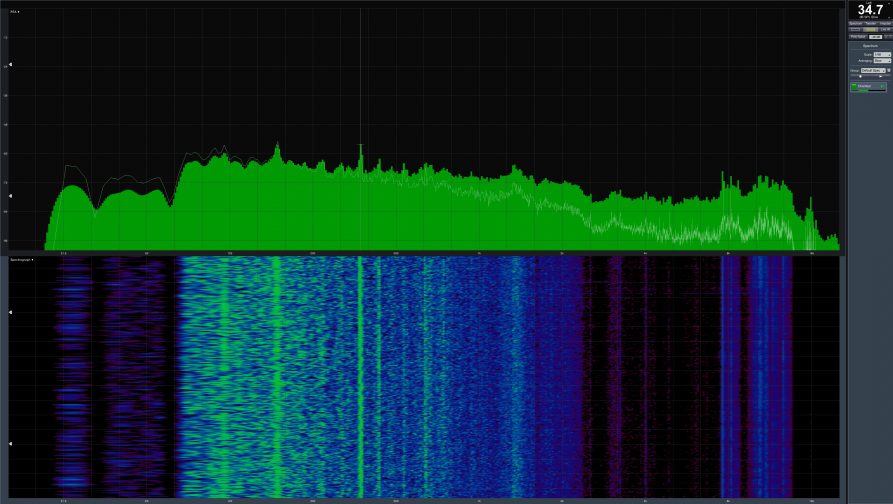There is a fan stop, it starts at approx. 62 to 63 °C and then cool the card at a constant temperature. The ascent until then is almost linear and the curve remains it after inserting the fans as well. And horizontally. The switch-on pulse is a bit very high, because you hear it very clearly. However, the hysteresis works really well and it eliminates the annoying on-off-on-effect of many competitor cards from the past. We also see again very nicely how differently fast the fans turn here.

By the way, this is no different with the stress test.

Let's look at the measured values again in direct comparison to the Founders Edition as a tabular listing:
| MSI RTX 2060 Super Gaming X | Nvidia RTX 2060 Super Reference | |
|---|---|---|
| Fan speeds Open Case Maximum | 1242 / 1638 rpm (Gaming, Peak) | 1756 rpm (Gaming, Peak) |
| Fan speeds Open Case Average | 1230 / 1629 rpm (warmed up) | 1740 rpm (warmed up) |
| Fan Speeds Closed Case Maximum | 1341 / 1653 rpm (Gaming, Peak) | 1820 rpm (Gaming, Peak) |
| Fan Speeds Closed Case Average | 1322 / 1722 rpm (warmed up) | 1800 rpm (warmed up) |
| Noise Emission (Air) Average | 34.7 dB(A), Closed Case | 35.4 dB(A), Closed Case (Peak) |
| Noise Emission (Air) Idle | Fan stop | 31 dB(A) |
| Sound characteristic / hearing impression | quiet, light noise | quiet, low-frequency peak |
| Coil-feathers/electric noises | very low, easy to perceive only at very high FPS numbers | low, only for very high FPS numbers and for load changes |
Sound Spectrum
The measured 34.7 dB(A) are once again well below the already quiet 35.4 dB(A) of the reference map and are based on the measured 1800 rpm in the closed housing. I applied the same gaming load to the open set-up in the measuring room, but the fans were set to approx. 1250 / 1600 rpm fixed to be able to adjust this value exactly, which this time was a bit tricky with the external control, because it needed double. The result is audibly below the level of the GeForce 2060 FE. The map is really quiet.
You can also perceive and measure subtle engine noise for light noise (see peaks on the spectral analysis above). The noise comes from the turbulences of the rotor blades and is defined by a non-oscillating noise of the two fans thanks to the different speeds. You could throttle the fans even further by e.g. the target temperature. to 70 °C. But that, in turn, does not have to be the case. The chirping of the coils is rather a slight bounce, but hardly perceptible.


































Kommentieren